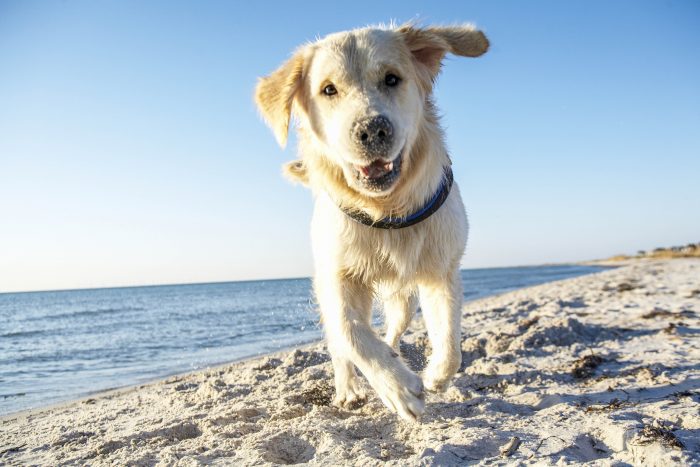By Matthew Kearns, DVM

As Halloween approaches, we usually worry about chocolate toxicity, but let’s not forget about grape and raisin toxicity. Grapes and their dehydrated form, raisins, have been implicated in kidney damage (sometimes severe irreversible damage). There is also still debate as to how many grapes or raisins are toxic to pets. Let’s take a closer look at grape and raisin toxicity to see if we can shed some light on what we do know about this nebulous topic.
Unfortunately, the exact toxic substance to dogs in grapes and raisins is still not completely known and neither the color of the grape, nor seeded versus seedless makes a difference. However, although this has not been completely verified, there has been somewhat of a breakthrough recently.
A compound in grapes called tartaric acid has been speculated as the toxic culprit. Previously, experts felt that high concentration of a type of sugar component called monosaccharides was to blame, whereas others blamed a compound called tannins. Additional theories do not implicate anything in the grape itself, but rather the growth of certain fungi on the grape and toxins produced called aflatoxins, or pesticides sprayed on grapes.
The toxic dose or quantity of grapes and raisins is also up for debate. There does seem to be a genetic component associated with which individual dogs are more sensitive grapes or raisins. An article published in 2009 reviewed the charts of almost 200 dogs over a 13-year period. The study found some dogs ate over two pounds of raisins without developing any signs of poisoning, whereas others developed irreversible kidney failure with as little as three grams of grapes or raisins.
Just to give you some perspective as to what three grams is: your average grape weighs 5 grams, and a raisin weighs about 0.5 grams. As little as one grape or six raisins could be toxic to your dog. However, some dogs will not get sick, or require large amounts of grapes/raisins before any damage is done. A good rule of thumb is 1 grape/raisin per 10 pounds should be a concern.
There is no antidote once the patient starts showing symptoms so this is truly an example of, “an ounce of prevention is worth a pound of cure”. Symptoms of toxicity include lethargy, loss of appetite, vomiting, and increase in thirst/urination. These patients were less likely to make a full recovery. Some were euthanized before discharge. The patients that did better in the same 2009 study were those in which the owners witnessed the ingestion and brought to a veterinary clinic immediately where veterinarians were able to induce emesis (force vomiting) and give activated charcoal ASAP.
In conclusion, although veterinarians are closer to determining the toxic component (tartaric acid), we are not sure why some dogs are more sensitive than others and what is a toxic dose. Therefore, keep grapes and raisins away from your dog when possible and, if you witness your dog eating grapes or raisins, bring him or her immediately to your veterinarian’s office or an emergency clinic for treatment.
Dr. Kearns practices veterinary medicine from his Port Jefferson office and is pictured with his son Matthew and his dog Jasmine.






